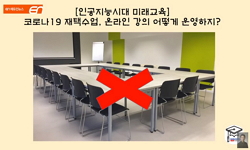Purpose: Intraoperative indocyanine green (ICG) lymphography is an effective tool to obtain real-time video images of functioning lymph vessels in edematous limbs. However, it is difficult to identify the course of lymph vessels in obese patients or p...
http://chineseinput.net/에서 pinyin(병음)방식으로 중국어를 변환할 수 있습니다.
변환된 중국어를 복사하여 사용하시면 됩니다.
- 中文 을 입력하시려면 zhongwen을 입력하시고 space를누르시면됩니다.
- 北京 을 입력하시려면 beijing을 입력하시고 space를 누르시면 됩니다.

건강한 아시아인들의 하지 림프관 주행 분석 = Lymphatic Vessels Mapping in the Lower Extremities of a Healthy Asian Population
한글로보기https://www.riss.kr/link?id=A107243924
- 저자
- 발행기관
- 학술지명
- 권호사항
-
발행연도
2020
-
작성언어
Korean
-
주제어
Lymphatic vessels ; Lymphedema ; Indocyanine green ; Lymphography ; Lower extremity ; 림프관 ; 림프부종 ; 인도시아닌그린: 림프조영술 ; 하지
-
등재정보
KCI등재
-
자료형태
학술저널
- 발행기관 URL
-
수록면
225-231(7쪽)
-
KCI 피인용횟수
0
- DOI식별코드
- 제공처
- 소장기관
-
0
상세조회 -
0
다운로드
부가정보
다국어 초록 (Multilingual Abstract)
Purpose: Intraoperative indocyanine green (ICG) lymphography is an effective tool to obtain real-time video images of functioning lymph vessels in edematous limbs. However, it is difficult to identify the course of lymph vessels in obese patients or patients with large dermal backflow. Without the image, surgeons have to rely on their experience when performing the skin incision to locate the lymphatic vessels. This study focused on elucidating lymphatic vessel flow patterns in healthy lower extremities in an Asian population to refer these findings for lymphedema treatment. Methods: ICG fluorescence lymphography was performed by injecting 0.2 mL of ICG into the first web space of the foot. After 4 hours, fluorescence images of lymphatic vessels were obtained and the lymphatic vessels were marked. Three landmarks were designated; the medial malleolus, the medial patellar border, and the groin femoral artery. Straight lines connecting the points were drawn, and the distance between the connected lines and the marked lymphatic vessels was measured in eight points. Results: Fifteen subjects with healthy lower extremities (15 right and 15 left) were included. The average course of the main lymph vessels passed 26.2±18.0 mm dorsally to the medial malleolus, 53.7±35.7 mm medially to the medial patellar border, and 25.5±19.2 mm medially to the three-quarters point of the upper landmark line. Conclusion: The main functioning lymphatic vessel largely follows the great saphenous vein course, passes in front of the medial malleolus, runs over the posterior border of the medial epicondyle at the knee level, and travels anteriorly toward the inguinal lymph nodes.
국문 초록 (Abstract)
방법: 발의 첫 번째 지간 사이에 0.2 mL의 ICG를 주입한 후 ICG 형광(fluorescence) 림프 조영술을 실행하였다. 4시간 후, fluorescence image를 촬영하여 림프관 주행을 표시하였다. 세 부위의 랜드마크를 지정하였고 직선으로 그 점들을 연결하였다. 점들을 연결한 직선의 길이와 표시된 림프관들은 8가지 points로 측정하였다.
결과: 15명의 건강한 아시아인들의 하지(우측 15개, 좌측 15개)를 연구하였다. 평균적으로 림프관은 내측과의 배측 26.2±18.0 mm을 지나 슬개골 경계의 내측 53.7±35.7 mm을 지난 후 상단 랜드마크 라인의 3분의 4지점의 내측 25.5±19.2 mm을 지났다.
결론: 주 림프관은 대복재정맥의 주행을 따랐다. 내측과 앞을 지나, 무릎 높이에서 내측 상과의 뒷부분을 지나, 서혜부 림프절들로 이어졌다.
목적: 수술 중 인도시아닌 그린(indocyanine green, ICG) 림프 조영술을 사용한 실시간 영상 촬영은 림프 부종 환자들의 림프관을 관찰하는 데 효과적인 방법이다. 하지만 비대하거나 어느 정도 진...
목적: 수술 중 인도시아닌 그린(indocyanine green, ICG) 림프 조영술을 사용한 실시간 영상 촬영은 림프 부종 환자들의 림프관을 관찰하는 데 효과적인 방법이다. 하지만 비대하거나 어느 정도 진행된 림프 부종 환자들에서 이와 같은 방법으로 림프관 주행을 파악하는 것은 어려운 일이다. 영상이 없으면 외과의사들은 감에만 의존하여 절개를 해야 한다. 본 논문은 건강한 아시아인들의 하지 림프관 주행을 연구하여 위와 같이 영상을 얻을 수 없는 림프 부종 치료 시 참고할 수 있게 하고자 한다.
방법: 발의 첫 번째 지간 사이에 0.2 mL의 ICG를 주입한 후 ICG 형광(fluorescence) 림프 조영술을 실행하였다. 4시간 후, fluorescence image를 촬영하여 림프관 주행을 표시하였다. 세 부위의 랜드마크를 지정하였고 직선으로 그 점들을 연결하였다. 점들을 연결한 직선의 길이와 표시된 림프관들은 8가지 points로 측정하였다.
결과: 15명의 건강한 아시아인들의 하지(우측 15개, 좌측 15개)를 연구하였다. 평균적으로 림프관은 내측과의 배측 26.2±18.0 mm을 지나 슬개골 경계의 내측 53.7±35.7 mm을 지난 후 상단 랜드마크 라인의 3분의 4지점의 내측 25.5±19.2 mm을 지났다.
결론: 주 림프관은 대복재정맥의 주행을 따랐다. 내측과 앞을 지나, 무릎 높이에서 내측 상과의 뒷부분을 지나, 서혜부 림프절들로 이어졌다.
참고문헌 (Reference)
1 Seki Y, "The superior-edgeof-the-knee incision method in lymphaticovenular anastomosis for lower extremity lymphedema" 136 : 665e-675e, 2015
2 Kinmonth JB, "The lymphatic circulation in lymphedema" 139 : 129-136, 1954
3 Yamamoto T, "The earliest finding of indocyanine green lymphography in asymptomatic limbs of lower extremity lymphedema patients secondary to cancer treatment: the modified dermal backflow stage and concept of subclinical lymphedema" 128 : 314e-321e, 2011
4 Koshima I, "Supermicrosurgical lymphaticovenular anastomosis for the treatment of lymphedema in the upper extremities" 16 : 437-442, 2000
5 Yamamoto T, "Simultaneous multi-site lymphaticovenular anastomoses for primary lower extremity and genital lymphoedema complicated with severe lymphorrhea" 64 : 812-815, 2011
6 Unno N, "Quantitative lymph imaging for assessment of lymph function using indocyanine green fluorescence lymphography" 36 : 230-236, 2008
7 Unno N, "Preliminary experience with a novel fluorescence lymphography using indocyanine green in patients with secondary lymphedema" 45 : 1016-1021, 2007
8 Ogata F, "Novel lymphography using indocyanine green dye for near-infrared fluorescence labeling" 58 : 652-655, 2007
9 Yamamoto T, "Minimally invasive lymphatic supermicrosurgery (MILS): indocyanine green lymphography-guided simultaneous multisite lymphaticovenular anastomoses via millimeter skin incisions" 72 : 67-70, 2014
10 Campisi C, "Microsurgical techniques for lymphedema treatment: derivative lymphatic-venous microsurgery" 28 : 609-613, 2004
1 Seki Y, "The superior-edgeof-the-knee incision method in lymphaticovenular anastomosis for lower extremity lymphedema" 136 : 665e-675e, 2015
2 Kinmonth JB, "The lymphatic circulation in lymphedema" 139 : 129-136, 1954
3 Yamamoto T, "The earliest finding of indocyanine green lymphography in asymptomatic limbs of lower extremity lymphedema patients secondary to cancer treatment: the modified dermal backflow stage and concept of subclinical lymphedema" 128 : 314e-321e, 2011
4 Koshima I, "Supermicrosurgical lymphaticovenular anastomosis for the treatment of lymphedema in the upper extremities" 16 : 437-442, 2000
5 Yamamoto T, "Simultaneous multi-site lymphaticovenular anastomoses for primary lower extremity and genital lymphoedema complicated with severe lymphorrhea" 64 : 812-815, 2011
6 Unno N, "Quantitative lymph imaging for assessment of lymph function using indocyanine green fluorescence lymphography" 36 : 230-236, 2008
7 Unno N, "Preliminary experience with a novel fluorescence lymphography using indocyanine green in patients with secondary lymphedema" 45 : 1016-1021, 2007
8 Ogata F, "Novel lymphography using indocyanine green dye for near-infrared fluorescence labeling" 58 : 652-655, 2007
9 Yamamoto T, "Minimally invasive lymphatic supermicrosurgery (MILS): indocyanine green lymphography-guided simultaneous multisite lymphaticovenular anastomoses via millimeter skin incisions" 72 : 67-70, 2014
10 Campisi C, "Microsurgical techniques for lymphedema treatment: derivative lymphatic-venous microsurgery" 28 : 609-613, 2004
11 Tomczak H, "Lymphoedema: lymphoscintigraphy versus other diagnostic techniques: a clinician’s point of view" 8 : 37-43, 2005
12 Amore M, "Lymphedema:a general outline of its anatomical base" 32 : 2-9, 2016
13 Szuba A, "Lymphedema: classification, diagnosis and therapy" 3 : 145-156, 1998
14 Warren AG, "Lymphedema: a comprehensive review" 59 : 464-472, 2007
15 Koshima I, "Longterm follow-up after lymphaticovenular anastomosis for lymphedema in the leg" 19 : 209-215, 2003
16 Yamamoto T, "Lambda-shaped anastomosis with intravascular stenting method for safe and effective lymphaticovenular anastomosis" 127 : 1987-1992, 2011
17 Ogata F, "Intraoperative lymphography using indocyanine green dye for near-infrared fluorescence labeling in lymphedema" 59 : 180-184, 2007
18 Yamamoto T, "Indocyanine green-enhanced lymphography for upper extremity lymphedema:a novel severity staging system using dermal backflow patterns" 128 : 941-947, 2011
19 Yamamoto T, "Characteristic indocyanine green lymphography findings in lower extremity lymphedema: the generation of a novel lymphedema severity staging system using dermal backflow patterns" 127 : 1979-1986, 2011
20 Shah C, "Breast cancer-related arm lymphedema:incidence rates, diagnostic techniques, optimal management and risk reduction strategies" 81 : 907-914, 2011
21 Hope-Ross M, "Adverse reactions due to indocyanine green" 101 : 529-533, 1994
22 Unno N, "A novel method of measuring human lymphatic pumping using indocyanine green fluorescence lymphography" 52 : 946-952, 2010
동일학술지(권/호) 다른 논문
-
부산 권역 외상센터에 내원한 중증외상 환자에서 원위요골 골절의 역학적 특성
- 대한수부외과학회
- 김동희
- 2020
- KCI등재
-
- 대한수부외과학회
- 정형서
- 2020
- KCI등재
-
정상적인 지질 수치를 보이는 환자의 사지에서 발생한 다발성 거대 건황색종
- 대한수부외과학회
- 서두헌
- 2020
- KCI등재
-
- 대한수부외과학회
- 김영우
- 2020
- KCI등재
분석정보
인용정보 인용지수 설명보기
학술지 이력
| 연월일 | 이력구분 | 이력상세 | 등재구분 |
|---|---|---|---|
| 2028 | 평가예정 | 재인증평가 신청대상 (재인증) | |
| 2022-01-01 | 평가 | 등재학술지 유지 (재인증) |  |
| 2019-01-01 | 평가 | 등재학술지 유지 (계속평가) |  |
| 2018-02-28 | 학술지명변경 | 한글명 : 대한수부외과학회 학회지 -> Archives of Hand and Microsurgery 외국어명 : The Journal of the Korean society for Surgery of the Hand -> Archives of Hand and Microsurgery |  |
| 2018-01-12 | 통합 |  |
|
| 2015-01-01 | 평가 | 등재학술지 선정 (계속평가) |  |
| 2013-01-01 | 평가 | 등재후보학술지 유지 (기타) |  |
| 2011-01-01 | 평가 | 등재후보학술지 선정 (신규평가) |  |
학술지 인용정보
| 기준연도 | WOS-KCI 통합IF(2년) | KCIF(2년) | KCIF(3년) |
|---|---|---|---|
| 2016 | 0.02 | 0.02 | 0.01 |
| KCIF(4년) | KCIF(5년) | 중심성지수(3년) | 즉시성지수 |
| 0.02 | 0.02 | 0.189 | 0.03 |




 KCI
KCI







